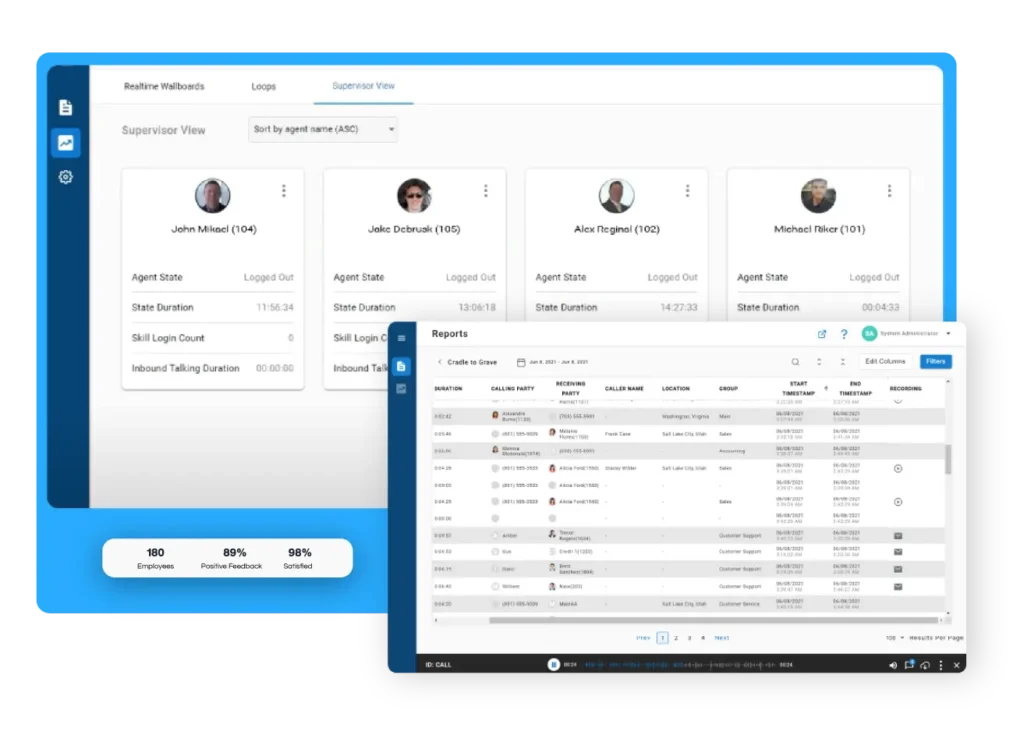In retail, the experience often matters more than the price tag. Customers can find similar products almost anywhere, but what brings them back is how they felt during and after the interaction.
That is why Customer Satisfaction Score, or CSAT, is such a critical metric. It measures how customers feel after an experience with your brand. Even small dips in CSAT can create ripple effects: lost loyalty, negative reviews, and a drop in lifetime value. In a world where customer patience is low, a single poor experience can send a shopper to the competition.
The Pitfalls of Feedback in Isolation
Many retailers collect customer feedback but do little with it in the moment. Surveys and reports often arrive too late to recover an unhappy customer. A low score is noted, but the issue that caused it has already spread to dozens of other interactions.
The other challenge is context. Measuring CSAT without connecting it to agent performance or operational workflows leaves retailers guessing about the cause.
Knowing that a score dipped is not enough. What matters is identifying why it happened and fixing it before more customers feel the same pain.
The Real Time CSAT Playbook
Here is a simple playbook that helps retailers move from measurement to immediate action.
Step 1: Monitor Continuously
CSAT should not live in a weekly report. By monitoring scores in real time, retailers can spot trends as they develop. A sudden rise in complaints about delivery delays or return policies becomes visible right away. With Xima’s real time wallboards, managers see customer satisfaction scores alongside call and chat activity as they happen.
Step 2: Detect Issues at the Source
Low scores always have a root cause. By combining CSAT with call and chat data, retailers can see if complaints tie back to long hold times, confusing policies, or product specific issues. Xima’s advanced reporting helps connect the dots between feedback and performance so leaders can address problems at the source.
Step 3: Adjust Staffing in the Moment
If low scores line up with long queues, managers can reallocate staff immediately. This quick action prevents more customers from having a negative experience. Instead of waiting for next week’s report, retailers can fix the issue while it is happening.
Step 4: Coach Agents with Context
Feedback is most useful when it is linked to a specific interaction. With tools like Xima’s speech analytics, managers can see exactly where an interaction broke down and provide real time coaching. Agents improve faster, and customers feel the results in their next interaction.
Step 5: Close the Loop with Customers
Negative feedback should not be the end of the story. With callbacks or proactive outreach, retailers can turn an unhappy customer into a loyal one. Reaching out to acknowledge the issue and resolve it shows customers they are heard and valued.
From Score to Loyalty
When retailers treat CSAT as more than a number, they build a cycle of loyalty. Monitoring in real time, acting quickly, and coaching with context all send a powerful message: we care about your experience.
Over time, this approach reduces churn, increases lifetime value, and strengthens competitive advantage. CSAT becomes not just a score to track, but a tool to drive growth and loyalty.
Closing Thought
Customer satisfaction is not just a measure of how a shopper feels in the moment, it is a predictor of future loyalty. In retail, the gap between a customer who comes back and a customer who never returns can be as small as a single interaction.
By using AI driven insights and real time tools, retailer contact centers can close that gap. They can act on feedback before it spreads, adjust operations before SLAs are missed, and coach staff before small problems become recurring ones.
With the right approach, CSAT becomes more than a metric. It becomes the foundation for stronger loyalty, higher lifetime value, and a brand experience that keeps customers coming back.



